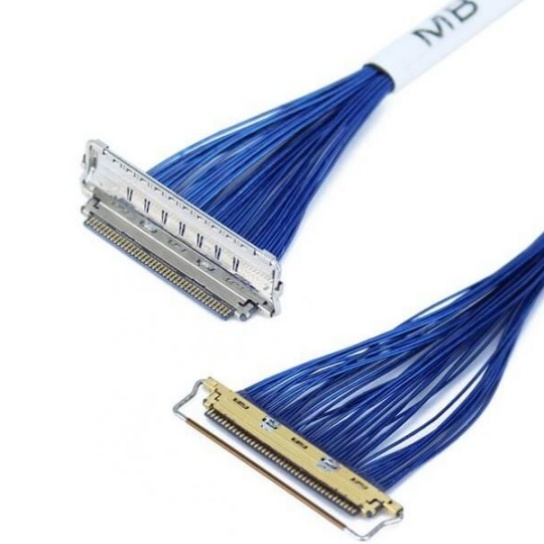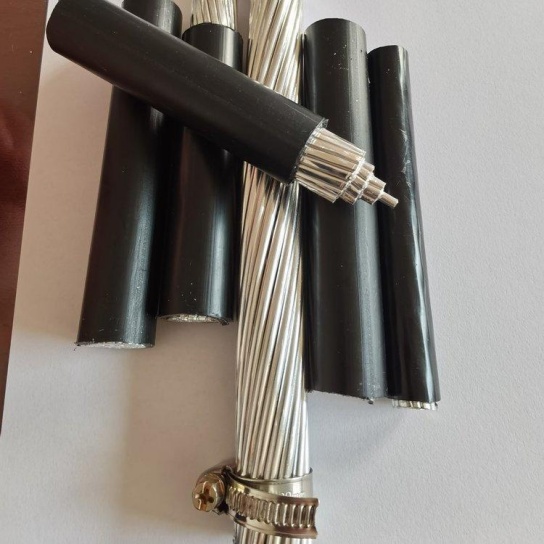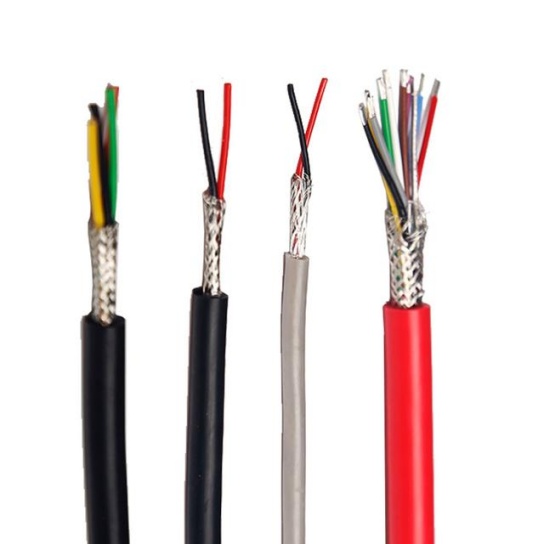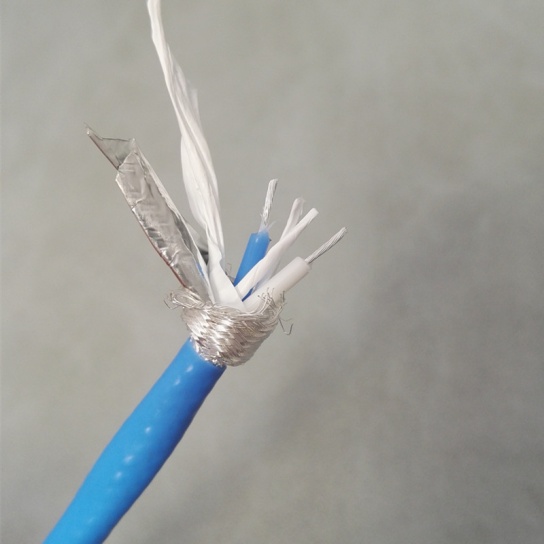Flexible Aircraft Cable Assemblies for Tight Spaces in Aircraft
Aircraft design continues to push toward miniaturization and enhanced integration, especially in critical areas like avionics bays, engine nacelles, and landing gear compartments. These spaces are inherently tight—often constrained by structural frames, hydraulic lines, and electronic components—creating unique challenges for wiring systems. Traditional rigid cable assemblies struggle to navigate these confined areas: they require larger bending radii, risk damage from friction or vibration, and can limit access for maintenance. This is where flexible aircraft cable assemblies emerge as a mission-critical solution, engineered to deliver reliability, adaptability, and performance in the most space-constrained environments.
Core Characteristics of Flexible Aircraft Cable Assemblies for Tight Spaces
To excel in narrow aircraft zones, flexible cable assemblies incorporate specialized design elements and materials that balance flexibility with aerospace-grade durability:
1. Material Innovation for Flexibility and Resilience
The conductor and insulation materials are carefully selected to maximize bendability without compromising strength. Conductors typically use fine-stranded copper (often tinned or nickel-plated) instead of solid copper; the multiple small strands allow the cable to flex repeatedly without fatigue or breakage—critical for areas where vibration (e.g., near engines) or occasional movement (e.g., landing gear retraction) is common. Insulation and jacketing materials, such as PTFE (polytetrafluoroethylene) or FEP (fluorinated ethylene propylene), offer exceptional flexibility at both high and low temperatures (-65°C to 200°C or higher) while resisting aviation fluids (fuel, hydraulic oil) and harsh atmospheric conditions (moisture, ozone).
2. Compact Structural Design
Flexible assemblies minimize bulk to fit tight clearances. This includes:
- Thin-wall insulation: Reduces overall cable diameter without sacrificing dielectric strength, essential for routing alongside other components.
- Low-profile connectors: Compact, lightweight connectors (e.g., Micro-D, D-subminiature, or custom-molded variants) with minimal protrusion, designed to mate in spaces where standard connectors would be too large.
- Customized bundling: Instead of rigid cable trays, flexible assemblies use lightweight sleeving or tie wraps to organize wires into slim, conformable bundles that follow the contours of aircraft structures.
3. Performance Under Constraints
Flexibility does not come at the cost of performance. These assemblies maintain critical aerospace requirements:
- EMI/RFI shielding: Foil or braided shielding (often tinned copper or aluminum) protects signals from electromagnetic interference—vital for avionics systems in tight spaces where wiring is close to power lines.
- Mechanical durability: They meet rigorous tensile and abrasion standards (e.g., MIL-DTL-24682) to withstand installation and maintenance handling, even in areas where cables rub against metal frames.
- Fire resistance: Materials comply with FAA standards (e.g., FAR 25.853) for flame, smoke, and toxicity (FST), ensuring safety in enclosed spaces where fire risks are heightened.
Key Applications in Tight Aircraft Spaces
Flexible aircraft cable assemblies are indispensable in areas where space is at a premium, directly supporting aircraft functionality and safety:
1. Avionics Bays
Modern avionics bays house navigation systems, communication units, and flight control computers—all in compact, densely packed enclosures. Flexible cable assemblies route data and power between these components, navigating around circuit boards and cooling systems without blocking airflow or access to critical parts. Their small bending radius (often as low as 3x the cable diameter) allows them to fit between tightly spaced circuit modules, reducing the need for bulky cable management.
2. Engine Nacelles
Engine nacelles are among the most space-constrained and harsh environments in an aircraft. Flexible assemblies connect sensors (temperature, pressure, vibration) to the engine control unit (ECU), withstanding extreme heat and constant vibration. Unlike rigid cables, their flexibility absorbs vibration energy, preventing conductor fatigue and extending service life—critical for avoiding unplanned maintenance.
3. Landing Gear Compartments
Landing gear systems require wiring for hydraulic valves, position sensors, and brake controls, but the compartment is limited by the gear’s retraction mechanism and structural supports. Flexible cable assemblies conform to the gear’s movement path, bending as the gear extends or retracts without kinking. Their abrasion-resistant jacketing also protects against contact with moving parts like struts or wheels.
4. Interior Cabin Systems
Even passenger-focused areas benefit from flexible assemblies: tight spaces behind instrument panels, under seats, or within overhead bins use them to power lighting, in-flight entertainment (IFE) systems, and passenger controls. Their slim design reduces weight (a key factor in fuel efficiency) and simplifies installation in cabin structures where space is reserved for passenger comfort.
Design and Selection Considerations
When specifying flexible aircraft cable assemblies for tight spaces, engineers must prioritize factors that align with both space constraints and aerospace standards:
1. Space and Routing Requirements
- Bending radius: Verify that the assembly’s minimum bending radius (static and dynamic) matches the tightest turn in the routing path. Exceeding this radius can damage conductors or insulation.
- Cable length and slack: Minimize excess length to avoid clutter, but include slight slack to accommodate thermal expansion or component movement (e.g., engine heat-induced expansion).
2. Environmental Conditions
- Temperature range: Select materials rated for the specific environment (e.g., higher-temperature insulation for engine zones vs. standard materials for cabin areas).
- Chemical exposure: Ensure jacketing resists fluids present in the space (e.g., hydraulic oil in landing gear bays, fuel vapors in wing compartments).
3. Compliance and Certification
All assemblies must meet aerospace regulations, including FAA (Federal Aviation Administration) and EASA (European Union Aviation Safety Agency) standards, as well as industry specs like MIL-SPEC (military specifications) or SAE (Society of Automotive Engineers) standards. Look for assemblies with traceable certification documentation to streamline aircraft compliance.
Technological Advancements Enhancing Flexibility
Industry innovation continues to expand the capabilities of flexible aircraft cable assemblies for tight spaces:
- Lightweight alloys: New conductor materials (e.g., copper-clad aluminum) reduce weight by up to 30% compared to traditional copper, without sacrificing conductivity—ideal for fuel efficiency goals.
- 3D-printed connectors: Custom 3D-printed connectors allow for even more compact designs, tailored to unique tight-space geometries that standard connectors cannot match.
- Integrated shielding and insulation: Co-extruded designs combine shielding and insulation into a single layer, reducing diameter and improving flexibility while maintaining EMI protection.
FRS: Your Trusted Partner for Flexible Aircraft Cable Assemblies
When precision, reliability, and adaptability matter most in tight aircraft spaces, FRS stands out as a leading manufacturer of custom flexible aircraft cable assemblies. FRS’s engineering team specializes in designing solutions tailored to your unique space constraints, using aerospace-grade materials (compliant with MIL-SPEC, FAA, and EASA standards) to ensure durability and performance. From avionics bays to engine nacelles, FRS assemblies deliver tight-radius flexibility, EMI protection, and FST compliance—backed by rigorous testing and traceable certification. Whether you need standard configurations or fully custom designs, FRS combines technical expertise with efficient production to meet your aircraft’s demands. Choose FRS for flexible cable assemblies that turn tight spaces into opportunities for enhanced performance.






